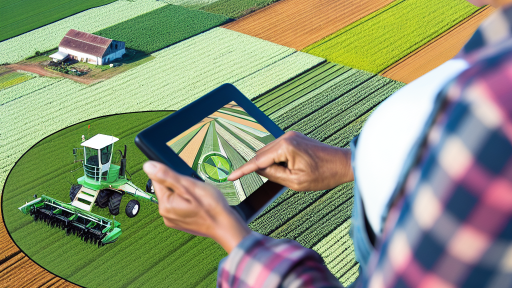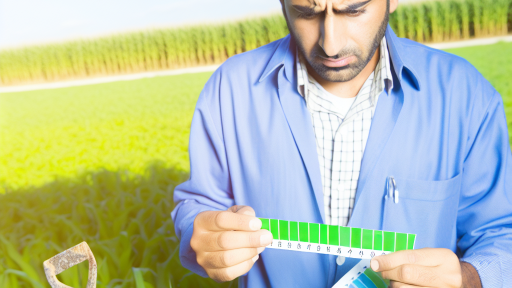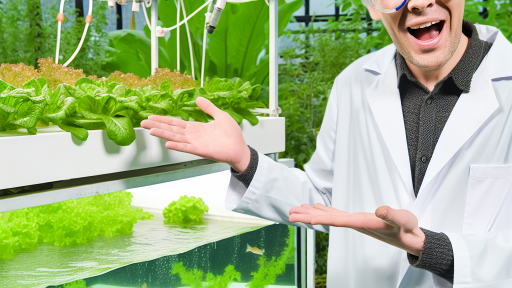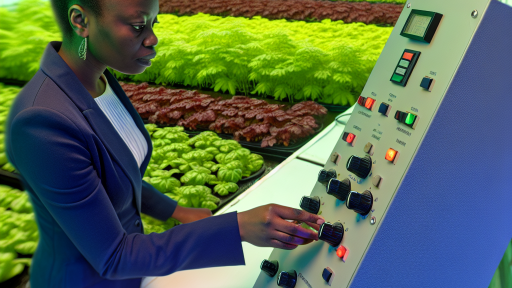Overview of Machine Learning in Agriculture
Machine learning revolutionizes agriculture through data-driven insights.
This technology enhances crop management practices significantly.
Agricultural professionals utilize machine learning for various applications.
Farmers benefit from improved decision-making processes.
Moreover, machine learning supports sustainable farming methods.
Data Collection and Analysis
Data is vital for effective machine learning applications.
Farmers gather information from various sources, including sensors.
Remote sensing technology plays a crucial role in data collection.
Analyzing this data helps understand crop health and soil conditions.
Additionally, predictive models enhance yield forecasting accuracy.
Crop Monitoring and Management
Machine learning allows for real-time crop monitoring.
This capability identifies issues such as pest infestations quickly.
It also assists in tracking irrigation needs and nutrient levels.
These insights help farmers optimize their management practices.
Consequently, yields can increase with more precise interventions.
Transform Your Agribusiness
Unlock your farm's potential with expert advice tailored to your needs. Get actionable steps that drive real results.
Get StartedYield Prediction and Risk Management
Yield prediction models utilize historical data for forecasting.
Farmers can anticipate harvest outcomes under varying conditions.
This information is essential for inventory and market planning.
Additionally, risk management strategies benefit from accurate predictions.
Machine learning can analyze weather patterns and climate trends.
Pest and Disease Detection
Machine learning enhances the detection of crop diseases.
Image recognition technologies identify symptoms quickly and accurately.
Farmers can address infestations before they spread significantly.
This proactive approach minimizes crop loss and maximizes yield.
Resource Optimization
Machine learning plays a key role in resource management.
It helps optimize water usage and fertilizer application rates.
This ensures resources are used efficiently on the farm.
As a result, environmental impacts are significantly reduced.
Implications of Machine Learning in Agriculture
Machine learning continues to transform crop management.
This technology offers innovative solutions to age-old farming challenges.
Farmers who embrace it can expect greater efficiency and sustainability.
Importance of Crop Management and the Role of Technology
Understanding Crop Management
Effective crop management enhances agricultural productivity.
It ensures optimal use of resources while minimizing waste.
Farmers apply various techniques to maintain soil health and fertility.
Good crop management practices lead to better yields.
Additionally, it improves the overall quality of the produce.
Significance of Technology in Agriculture
Technology transforms traditional farming practices significantly.
It enables farmers to make data-driven decisions.
Modern technology enhances efficiency across agricultural operations.
Showcase Your Farming Business
Publish your professional farming services profile on our blog for a one-time fee of $200 and reach a dedicated audience of farmers and agribusiness owners.
Publish Your ProfileAutomation and robotics streamline many farming processes.
Consequently, technology allows for precise monitoring and management.
Role of Machine Learning in Crop Management
Machine learning plays a vital role in agricultural advancements.
It analyzes vast amounts of data quickly and accurately.
This analysis helps farmers predict crop performance effectively.
Farmers can identify trends and make informed decisions.
Machine learning algorithms optimize planting schedules and resource allocation.
The Impact of Data-Driven Farming
Data-driven farming improves operational efficiency significantly.
Farmers can access real-time data through various platforms.
This immediate access enhances decision-making processes.
Furthermore, data analytics leads to better pest management strategies.
Farmers can minimize pesticide use, promoting sustainability.
Data Collection Techniques for Machine Learning in Farming
Utilizing Remote Sensing Technologies
Farmers increasingly use remote sensing technologies to gather data.
These technologies include satellites and drones.
They provide real-time information about crop health and soil conditions.
Consequently, farmers can make informed decisions quickly.
Additionally, remote sensing helps track environmental changes over time.
Implementing Soil Sensors
Soil sensors play a critical role in data collection.
They measure moisture levels, pH, and nutrient content directly.
This data allows farmers to optimize irrigation schedules and fertilization plans.
Moreover, soil sensors ensure efficient use of resources.
As a result, they promote sustainable farming practices.
Leveraging IoT Devices
The Internet of Things (IoT) revolutionizes farming data collection.
Irrigation systems can now operate intelligently using IoT devices.
These devices collect various data points to enhance operational efficiency.
Furthermore, IoT can integrate weather forecasts to optimize schedules.
Farmers can respond promptly to changing environmental conditions.
Gathering Field Measurements Manually
While technology plays a significant role, manual data collection remains valuable.
Farmers often conduct field measurements to supplement automated data.
Manual measurement includes crop yield assessments and pest monitoring.
This approach allows for a detailed understanding of local conditions.
It also supports the validation of technological data collection methods.
Utilizing Agricultural Apps
Various agricultural apps streamline data collection for farmers.
These apps connect farmers directly to real-time market data.
Furthermore, they provide tools for monitoring crop progress.
Farmers can upload photos and notes to track field conditions.
Therefore, these apps enhance transparency in farming practices.
Integrating Weather Data
Weather data significantly impacts crop management decisions.
Farmers gather data from local weather stations and online databases.
This information aids in planning planting and harvesting schedules.
Showcase Your Farming Business
Publish your professional farming services profile on our blog for a one-time fee of $200 and reach a dedicated audience of farmers and agribusiness owners.
Publish Your ProfileMoreover, it helps farmers prepare for extreme weather events.
Consequently, timely weather data can minimize losses in crop production.
Find Out More: Best Practices In Crop Health Monitoring Systems
Types of Machine Learning Algorithms Used in Crop Management
Supervised Learning
Supervised learning employs labeled datasets for training models.
This approach predicts outcomes based on input features.
Examples include predicting crop yields based on various factors.
Common algorithms include linear regression and decision trees.
Farmers can make informed decisions using these predictions.
Unsupervised Learning
Unsupervised learning analyzes unlabeled data to find patterns.
This method helps identify crop diseases or growth anomalies.
Clustering algorithms like k-means are often utilized.
Data visualization techniques enhance understanding of crop health.
Reinforcement Learning
Reinforcement learning optimizes actions through trial and error.
Agents learn by interacting with their environment for rewards.
This technique improves the efficiency of irrigation systems.
Farmers can automate decision-making using reinforcement learning.
Deep Learning
Deep learning utilizes neural networks to interpret complex data.
It excels at analyzing images for crop health assessment.
Convolutional neural networks (CNNs) are key in this area.
This advanced method can detect pests and diseases accurately.
Applications of Machine Learning in Crop Management
Precision agriculture benefits significantly from machine learning.
Farmers use algorithms to optimize resource usage effectively.
Data-driven strategies lead to higher yields and lower costs.
Machine learning reshapes the future of farming.
Learn More: Managing Pests and Diseases with Cover Crops
Predictive Analytics for Crop Yield Forecasting
Importance of Predictive Analytics
Predictive analytics significantly enhances crop management strategies.
It helps farmers anticipate crop yield under varying conditions.
Moreover, accurate forecasting minimizes the risks associated with farming.
Data Collection for Analysis
Collecting data is the first step in predictive analytics.
Farmers gather information from various sources, including weather stations.
Additionally, soil moisture sensors provide crucial insights.
Satellite imagery offers a broader perspective on crop health.
This data forms the foundation for effective yield predictions.
Machine Learning Techniques
Machine learning algorithms analyze historical data for pattern recognition.
These algorithms include regression analysis, decision trees, and neural networks.
They identify the factors influencing crop yield, such as climate and soil quality.
Additionally, machine learning models can adapt to new data inputs.
Implementation in Real-world Scenarios
Real-world applications demonstrate the effectiveness of predictive analytics.
Agronomists use these tools in sites like Sunny Farms in California.
Farmers apply predictive analytics to manage their resources efficiently.
Showcase Your Farming Business
Publish your professional farming services profile on our blog for a one-time fee of $200 and reach a dedicated audience of farmers and agribusiness owners.
Publish Your ProfileFor example, they optimize planting schedules based on forecasted data.
Benefits of Accurate Forecasting
Improved crop yield forecasting offers multiple benefits.
Firstly, it helps optimize resource allocation.
Farmers can allocate water and fertilizers more efficiently.
Secondly, accurate predictions reduce unnecessary expenses.
Lastly, it enhances food security by ensuring timely harvests.
You Might Also Like: Preventing Soil Degradation with Smart Practices
Machine Learning for Pest and Disease Detection
Introduction to Machine Learning in Agriculture
Machine learning is transforming crop management practices.
This technology helps farmers detect pests and diseases efficiently.
Increasingly, growers use machine learning tools in their fields.
Benefits of Machine Learning for Pest and Disease Detection
Using machine learning offers numerous advantages.
- It enhances accuracy in identifying crop issues.
- Machine learning algorithms analyze large data sets quickly.
- These tools enable farmers to respond proactively to threats.
Techniques Used in Pest and Disease Detection
Several techniques facilitate pest and disease detection with machine learning.
Image recognition plays a critical role in identifying infected plants.
Farmers utilize drones equipped with cameras for aerial imagery.
These images are processed through convolutional neural networks.
This method significantly improves detection rates.
Data Sources and Feature Selection
Data sources are vital for effective machine learning applications.
Farmers gather data from weather patterns, soil conditions, and historical records.
Feature selection is crucial for optimizing algorithms.
Relevant features can enhance predictive accuracy.
Thus, proper data collection and processing are essential steps.
Real-World Applications
Numerous projects exemplify the successful application of machine learning.
Agricultural companies like AgroAI and CropSense lead these initiatives.
Their platforms offer farmers real-time monitoring and alerts.
Furthermore, these tools improve decision-making for pest control.
Challenges and Future Directions
Despite the advantages, challenges remain in implementing these technologies.
Data privacy concerns often arise when large sets are used.
Additionally, integration with existing agricultural practices poses difficulties.
However, ongoing research promises improved solutions.
Future developments may lead to more user-friendly applications.
You Might Also Like: Integrated Pest Management After Harvest
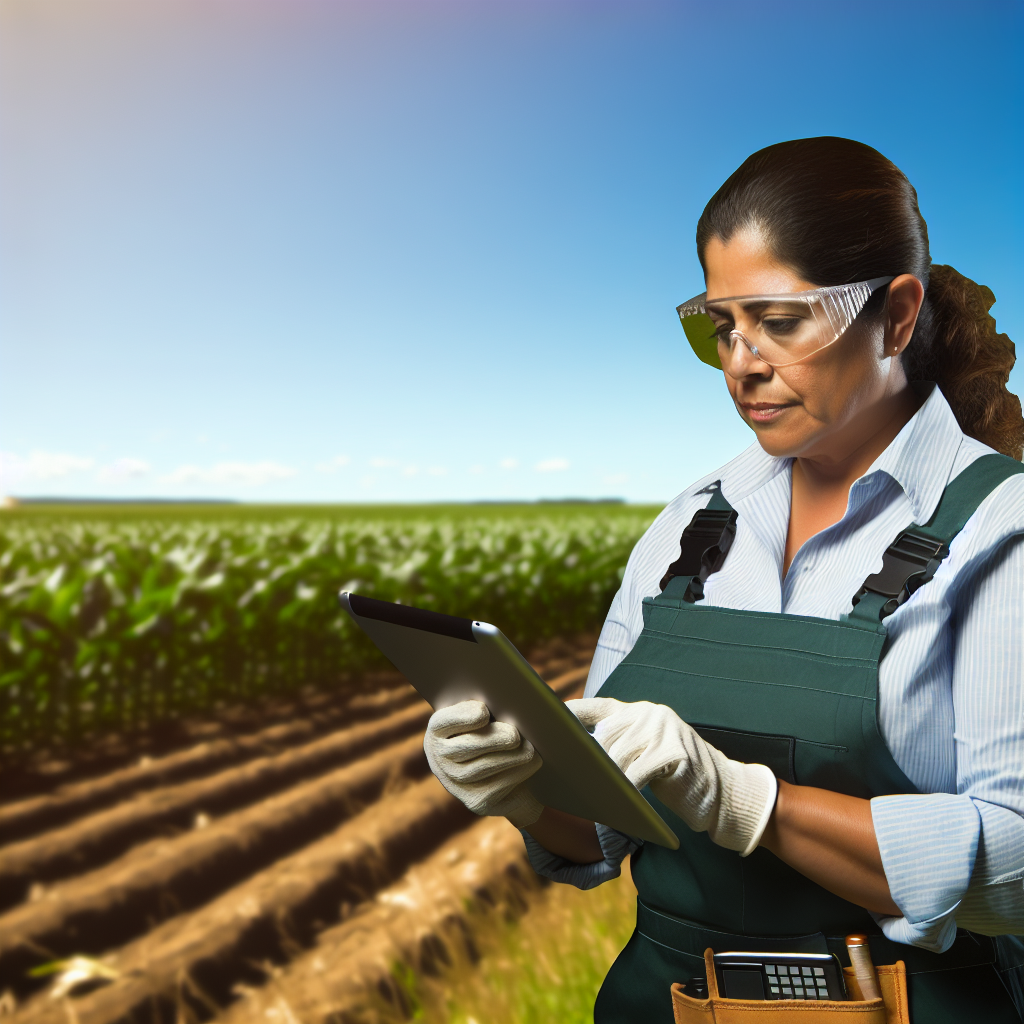
Precision Agriculture: Utilizing ML for Soil Health Monitoring
Introduction to Machine Learning in Agriculture
Machine learning (ML) revolutionizes agricultural practices.
It enables farmers to monitor soil health effectively.
Moreover, it provides data-driven insights for decision-making.
Benefits of Using ML in Soil Health Monitoring
ML improves soil health assessment accuracy.
It identifies nutrient deficiencies and excesses quickly.
Additionally, it helps in predicting soil erosion risks.
This technology optimizes crop yield and quality.
Techniques and Tools for Soil Health Monitoring
Farmers can use various ML techniques for soil analysis.
Data collection may include remote sensing and soil sampling.
Showcase Your Farming Business
Publish your professional farming services profile on our blog for a one-time fee of $200 and reach a dedicated audience of farmers and agribusiness owners.
Publish Your ProfileUtilizing sensors, farmers gather real-time soil data.
Artificial neural networks (ANNs) can analyze complex data patterns.
Other techniques include regression models and decision trees.
Real-World Applications of Soil Monitoring with ML
Companies like AgroIntelli implement ML for soil health assessments.
They utilize drone technology to collect valuable data.
In addition, Cropio offers an AI-driven platform for monitoring soil.
Such solutions enhance precision agriculture and sustainability.
Challenges in Implementing ML for Soil Monitoring
Despite its benefits, challenges exist in adopting ML technology.
Data privacy and security concerns must be addressed.
Furthermore, access to technology can be limited in rural areas.
Farmers may require training to use ML tools effectively.
The Future of ML in Agriculture
The future looks promising for ML applications in agriculture.
As technology advances, costs will likely decrease.
Consequently, more farmers will adopt ML methods.
Ultimately, improved soil health can lead to sustainable farming practices.
Automation in Farming Operations Through Machine Learning
Enhancing Precision Agriculture
Machine learning enhances precision agriculture by providing accurate data analysis.
Farmers can use sensors to collect real-time crop data.
Machine learning algorithms can then process this data effectively.
This process allows farmers to make informed decisions regarding irrigation and fertilization.
Predictive Analytics for Crop Yields
Predictive analytics plays a significant role in farming operations.
Machine learning models can predict crop yields based on various factors.
These factors include climate conditions, soil health, and historical yield data.
Farmers can adjust their practices for optimal production using predictions.
Optimizing Resource Management
Resource management is crucial in modern agriculture.
Machine learning provides insights into efficient resource allocation.
Farmers can reduce waste by analyzing water and nutrient usage patterns.
This optimization ultimately leads to cost savings and sustainable practices.
Automating Pest and Disease Detection
Automation significantly streamlines pest and disease management.
Machine learning can analyze images from drones and cameras.
These systems identify pests and diseases with high accuracy.
Timely detection enables swift action, minimizing crop damage.
Implementing Autonomous Equipment
Autonomous equipment enhances farming efficiency dramatically.
Tractors and harvesters equipped with machine learning can operate without human intervention.
This technology reduces labor costs and increases operational speed.
Farmers can focus on strategic management while machines handle repetitive tasks.
Case Studies: Successful Implementations of Machine Learning in Crop Management
Precision Agriculture at Greenfield Farms
Greenfield Farms adopted machine learning to optimize planting schedules.
By analyzing weather patterns and soil conditions, they improved crop yields.
Data-driven decisions led to efficient resource use, significantly reducing waste.
As a result, Greenfield experienced a 20% increase in profits over two seasons.
Crop Disease Prediction in Sunnyvale Orchards
Sunnyvale Orchards implemented machine learning for early disease detection.
Showcase Your Farming Business
Publish your professional farming services profile on our blog for a one-time fee of $200 and reach a dedicated audience of farmers and agribusiness owners.
Publish Your ProfileThey used remote sensing technologies to monitor plant health in real-time.
This proactive approach minimized pesticide usage and enhanced yield quality.
Additionally, they reduced labor costs associated with manual inspections.
Optimization of Irrigation Systems at Riverbend Farms
Riverbend Farms integrated machine learning to enhance irrigation practices.
By utilizing predictive models, they adjusted water usage efficiently.
This initiative led to a notable decrease in water consumption by 30%.
Ultimately, Riverbend’s crop health and production levels surpassed expectations.
AI-Driven Nutrient Management with Harvest Innovations
Harvest Innovations leveraged machine learning for nutrient management solutions.
The company analyzed soil data to create custom fertilizer plans for farmers.
Farmers reported heightened productivity and reduced fertilizer costs.
Moreover, Harvest Innovations contributed to sustainable farming practices across regions.
Collaboration with Agricultural Tech Startups
Several farms collaborated with startups to implement machine learning solutions.
These partnerships fostered innovation and provided access to cutting-edge technology.
Farmers benefited from real-time insights and tailored recommendations.
This collaborative approach accelerated the adoption of smart farming practices.
Future Trends in Machine Learning and its Potential Impact on Agriculture
Advancements in Data Collection
Machine learning relies heavily on data for training models.
New sensors and drones collect vast amounts of agricultural data.
These technologies provide real-time insights into crop health.
Moreover, data from satellite imagery enhances decision-making processes.
Integration with Precision Agriculture
Machine learning enhances precision agriculture techniques.
Farmers can optimize inputs like water and fertilizer effectively.
By using predictive models, they can anticipate crop yields.
This leads to more sustainable farming practices.
Automation and Robotics
The future holds increased automation in agriculture.
Machine learning drives the development of autonomous machinery.
Robots can now perform tasks like planting and harvesting efficiently.
This reduces labor costs and improves productivity.
Predictive Analytics
Predictive analytics shapes the strategies farmers use today.
Machine learning algorithms analyze historical data patterns.
Thus, they help predict weather impacts on crops.
Farmers can adjust their planting schedules accordingly.
Crop Disease and Pest Control
Machine learning identifies crop diseases through image recognition.
Farmers can receive alerts for potential pest infestations.
This proactive approach minimizes crop loss significantly.
Overall, early detection improves yield quality.
Enhanced Supply Chain Management
Machine learning improves supply chain efficiency in agriculture.
It forecasts demand trends, optimizing distribution routes.
Consequently, this reduces food waste in the supply chain.
Smart logistics increase profitability for farmers and suppliers.
Additional Resources
Showcase Your Farming Business
Publish your professional farming services profile on our blog for a one-time fee of $200 and reach a dedicated audience of farmers and agribusiness owners.
Publish Your ProfileAI-Driven Innovations in Agriculture / Alabama Agricultural …

